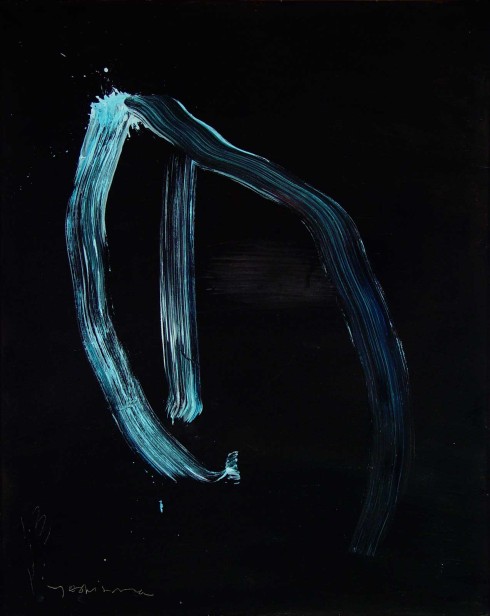
Jiro Yoshihara
“The world of supermodernity does not exactly match the one in which we believe we live, for we live in a world that we have not yet learned to look at. We have to relearn to think about space.”
Marc Auge
“I would propose instead the appropriation and redirection of the very technologies of distraction enforced by dominant culture… Hence, camouflage, mimicry, wit, guileful ruse, deception, and stealth — forms of qualified surrender — enter the lexicon of architectural means to reprogram the dominant logics of space in the city.”
Stan Allen
“…the happiness of travel is and remains temporary escape from home without subsequent demand…the traveller of the capitalist age must also be able to be a consumer, not a suitor, otherwise he loses the world of attractive strangers, among whom he has nothing to do, among whom he has no habit.”
Ernst Bloch
“Narajuna claims…that once emptiness or lack of *svabhava* in the self has been realized, it will be comparatively easy to understand the empitness of other phenomena.”
Jan Westerhoff (Introduction to The Madhyamaka)
It is becoming fairly obvious that the landscapes of the wealthier European countries, and that of North America, and especially the United States, are undergoing three critical changes. The first is the securitizing of space. The second is a new balkanizing of classes, under an almost feudal model, and the third has to do more with what has been erased. And the third is, perhaps, the most important.
“But if one defines “place” as relational, historical and concerned with identity, then a space which cannot be defined as relational, or historical, or concerned with identity will be a non-place. The hypothesis advanced here is that supermodernity produces non-places.”
Marc Auge
And since my concerns are mostly with how this affects and is created by aesthetics, it is important to try to more clearly see how these changes occur and to identify in various examples how they are manifested. Foucault said there are only constraining architectures, no liberating architectures. Now, I think this is actually not exactly true, but his point is still correct. Michael de Certeau defined strategy in opposition to tactics. Today, the dominant class, the ownership class, strategizes — it is the world view of marketing and property, and the U.S. government. Resistance then, in these terms, makes use of tactical adjustments.

‘Sitting Pits’, design by Walter Pichler, 1971. For Peter Novler.
“As such, space in de Certeau, can be seen as a metaphor that functions as an expansive imaginative tool for understanding and ordering our world…”
Cecilie Sachs Olsen
“Politics and therapy will be one and the same activity in the coming time. People will feel hopeless and depressed and panicking, because they are unable to deal with the post-growth economy, and because they will miss the dissolving modern identity.”
Bifo
Marc Auge’s notion of non-spaces is close to a number of other ideas out there, even I have written of the ‘dead now’, which is much the same thing. Steven Flusty, Neil Smith, Steve Graham, and others have all intuited this specific quality of hyper alienation that emerges out of both a deep numbing homogeneity in landscape, and the surveillance apparatus and fortress mentality of the state.
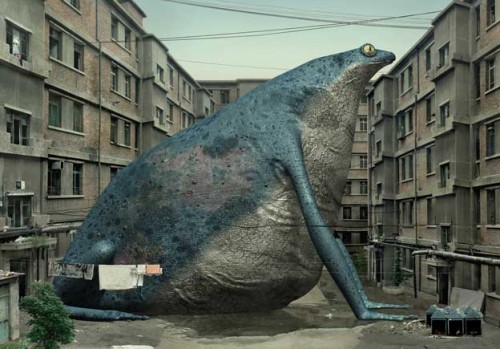
Liu Di
Mike Davis was probably the first to really see the coming trends when he wrote City of Quartz. The creation of spaces that are impossible for certain classes to access, or if accessed, that cannot be occupied comfortably for any length of time. Flusty of course gave names to some of these, but the overriding point is that the authority over space in most large cities of the U.S. today is in the hands of the police, and they monitor everyone. The actual physical barriers matter, too, and increasingly there is now an additional aspect to barriers and check points and that is the stealth space. The hidden, or non existent location. I find one of the curious aspects of GPS, actually, is that they so rarely work. Once you are *there*, you often, if not usually, find you are not. But I am more interested in that comment I quoted from Franco Berardi (Bifo). I have many issues with Bifo, but I still find some fascinating perspectives in his work, and one is what I have tried to write about in most of my recent posts; the growing loss of identity, but not just identity, for that loss might really be a positive in some contexts, but the insertion of the non-self. And the non-self is quite comfortable in non-places.
Victor Turner somewhere said something to the effect that *communitas* is not just banding together, but is bonding together. And that one of the features of bonding is that of collective ritual, and that ritual is located in a ritual space. A ritual place. And Robert Bly once said ‘all learning takes place in ritual space’, which I’ve always found to be true. Now, the evolution of non-places in what Auge labels *hypermodernity* has occurred through a conditioning of the populace to the loss of history. A conditioning to amnesia. I continue to find both Jain and Hindu cosmogony oddly appropriate to such discussions. Perhaps because in both the idea of ‘creation’ is dismissed. And perhaps it is the psychic correspondence between non-place and the erosion of thinking about it that seems hard to avoid. For amnesia gives birth to this absent mental space, this conceptual hole. Edward Casey’s book The Fate of Place is very good on the primeval origins of cosmogony and void as ‘ideas’. As he says, once the panic of the idea of void is admitted, the second problem is how to master the void (which implies, always, a sense of filling it).
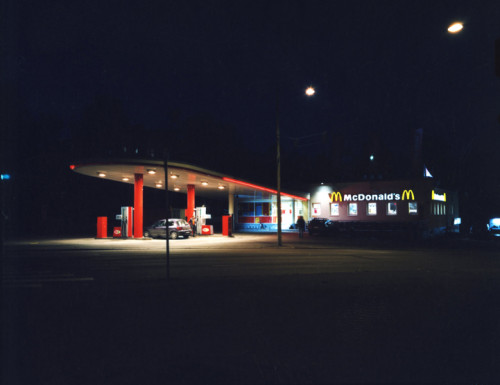
Takashi Homma, photography. Tokyo, suburbia.
Now there is much to be said about the dialectical development of space and place. And Casey argues that Newton signaled the most significant shift toward scientific measuring of space and place, but also began the introduction of our modern ideas of time. The 17th century was the age of mechanisms. Of the mechanical view of the Universe. These debates (Locke, Descartes, Leibniz, et al) set the conceptual stage of modern notions of space. Out of this came, for the purposes of this post, a significant idea, and that is *position* and from that The Panopticon.
“Positional primacy manifested itself in diverse forms in 18th century life and culture. The rise of neo-classicism in art and literature reflected a new concern with the precise position of objects in the scenes in which they were set, and the dominant royalist and aristocratic politics of the period also had much to do with ‘knowing one’s place’ in society…”
Edward Casey

Illustration from Ramayana, Thailand/Laos, 19th century.
Foucault rightly latches onto this moment as the birth of clinics, and all institutional logic. The surface was under the commanding gaze of the physician, and a moment later, the jailer. What Foucault called the surfaces of simultaneity — factories, hospitals, prisons, schools. All of them *spaces of domination*. The individual is located, and ‘observed’. The physics of the 17th century became manifestly the disciplinary space of the 18th. And Bentham, interestingly, never found much approval for his ideas in his native England, but it was in the colonies of the United States that his ideas gained popularity, and seemed to connect to a number of things having to do with the appeal of absolute vision of an entirety, and perhaps within that something of the purifying quality such gaze entails. What seems relevant for the new non-place of Auge and others is the seeds of this lie in several domains, I suspect. One is optics, and the development of optical technology, and the second is the growth of marketing and mass manipulation and propaganda by the ruling classes and third, the fragility today of the psyche, which is in fact the result of the first two…mostly.
It is impossible, almost, not to start to see the narrative implications of ‘place’, the oddness of it in relation to scientifically measured ‘space’. Casey is correct when he suggests that almost all post Descartes philosophy was about ‘mind’. And here is the intersection of representation and space, or narrative, for they go together I think. And this in turn leads to how the body enters the discussion. And that in turn, at least for me, leads to psychoanalysis. But before that, there is this idea of representation in terms of expression. It is very hard to ignore language, and that is an entire other discussion, albeit an important one, but if one just goes directly to narrative there emerges all the issues of metaphor and image and poetics. Bachelard was sort of the original thinker on psychoanalytic localities and art and culture. This is a territory that Benjamin was acutely concerned with, too. That children build their worlds, psychically, out of the intimate localities of their early life. The home, the empty room, the spaces of closets or cubicles, or carpets. And this is also linked to the body.
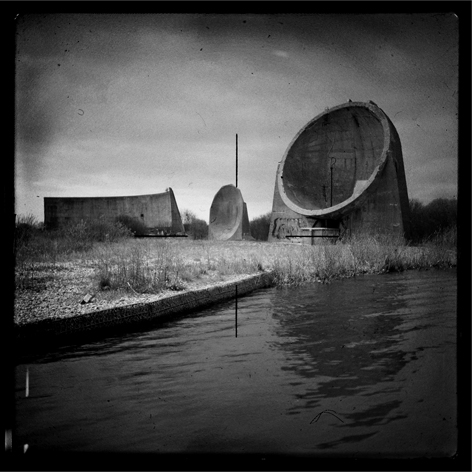
‘Acoustic Mirrors’, Denge, Royal Air Force experiments , 1920s. (photo courtesy of Kite & Laslett)
Edmund Plowdon, at the start of the 19th century, articulated in precise legal terms the King’s body as identical to the Body Politic. Ernest Kantorowicz’s famous study, The King’s Two Bodies, delves into the history of Kingship and the core mysticism of Royal attributes. Plowdon was only the quasi culmination of several hundred years of medieval thinking on the subject of the King’s body.
“Twin-born with greatness, subject to the breath
Of every fool, whose sense no more can feel
But his own wringing. What infinite heart’s ease
Must kings neglect that private men enjoy?
And what have kings that privates have not too,
Save ceremony, save general ceremony?”
Henry V
Act 4, scene 1.
There are a host of, actually almost infinite, examples of how space and place impact speech and are impacted by it. Adverbs alone are a huge issue. How the child develops understanding of ideas such as *in* or *out* is a complex topic. But it is clearly linked to the perception, in the mind, of the body. Of *our* body. Of course there is a primal relationship of ‘other’ in relation to our learned sense of self, and self-body. Foucault said ‘space has a history’. But whose space? And whose history? The contemporary landscape is one where place is increasingly ephemeral, because bodies — other’s bodies — are ever more fungible, or sometimes invisible. Now, Kantorowicz’s book is so fascinating for the details; things such as in 1130 in France, the idea of the ‘invisible crown’ was introduced. Throughout the history of Royal rule there are strange meldings of physical and metaphysical. But the people saw nothing unusual in an invisible crown (though they may have seen something contemptible in the King himself) or in ideas such as the ‘place of the crown’. Rex and regnum — the body politic, the territory, the crown, the King. Contemporary life has stealth spaces and CCTV, but it is just as metaphysical.
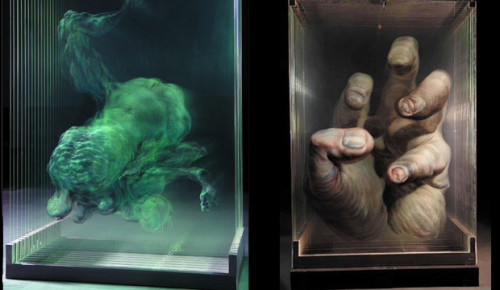
Xia Xiao Wan
One of the implications of Foucault and the imprint of the dominant class on social space in the 18th century, is an architecture that has lost the quality of ritual and ceremony — but has revealed something of this hidden and inaccessible ‘other space’ of modern life. As if the controlled spaces of domination produced something unintended. Casey writes; “The prominence of place in early Greek thought having been subdued by the growing preoccupation with space in late Hellenistic and medieval philosophy, the very idea of place came to inhabit the underworld of the modern cultural and philosophical unconscious.” This cannot be separated from the compulsive repetitions of mass culture today. One of the chief effects of electronic mass culture is the removal of the human from not just space, but more significantly from place.
“In his book Mythe et pensee chez les Crees, Jean-Pierre Vernant shows how, in
the Hestia/Hermes couple, Hestia symbolizes the circular hearth placed in the centre of the house, the closed space of the group withdrawn into itself (and thus in a sense of its relations with itself); while Hermes, god of the threshold and the door, but also of
crossroads and town gates, represents movement and relations with others.”
Marc Auge
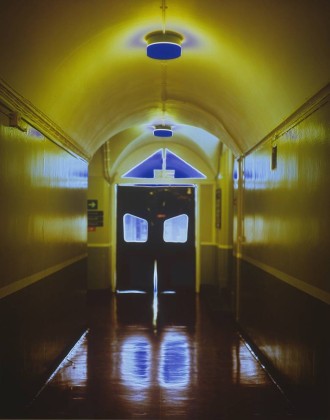
Catherine Yass, photography/media.
The public is conditioned to view ideas of ritual as archaic, as somehow not modern, not serving any purpose. The patented absurdities that revolve around *efficiency* have become, even to the indoctrinated, glaringly obvious. Modern life — or post modern life, is repetitive and anti social, there are no spaces for memory in the landscapes of the West. People cannot remember what remembering is, or if it once existed. They spend inordinate amounts of time performing rote bureaucratic activities, or waiting. The contemporary idea of waiting means waiting frustrated. Waiting for what you don’t really want. But there is something else in all this alienated space, and that is leisure time, often spent as tourism, is constructed to exactly distinguish itself from the lives of the poor. Tourism is created as the anti-image of poverty. Except of course, it largely duplicates many features of poverty in the sense that experience is robbed. Leisure, as Adorno knew fifty years ago, resembles work today. But now, it is becoming not just a imitation of work, but an ersatz version of conquest. The snap shot or the selfie in front of a tourist icon must be part of the reduced narratives of being different than the natives. The narrative is WE are here, the photo is proof, and we are clearly different — and the difference that is embodied in images of the vacationer smiling in the foreground, as the subject of the photo. This is a simplified explanation, but the point is that manufacturing difference is an a 24 hour a day second occupation. The architecture of the West is more often now, in new construction, firstly a building shorn of memory. The very idea of building a huge new museum, for example, is one in which the capturing of attention is the first goal, followed closely by the defining of itself as NOT part of the history of the area. For history is backward looking. Progress must be implied somehow. But the future is now an economically defined future. The capturing not just of attention, but of attendance. As much as this is is clearly the goal, there is enormous ad copy devoted to explaining just the opposite. As quickly as memory is erased, the official stamp of MEMORY is written across the facade.

Michael Schmidt, photographer.
Vernant, in writing of the fifth and fourth centuries, observes that theory of *mimesis* (introduced by Xenophan) culminates in the shift from making present the invisible, to the imitation of appearance. This is a hugely significant shift and one from which western society has yet to fully emerge. What is left behind is the world beyond our senses. As Vernant notes, it is from this period henceforth that illusion, the illustration of the world before our eyes, replaces religious reality. Or, in other words, the ritual foundations are removed. The earlier work, and Vernant is writing mostly of statuary here, was concerned with making present what was absent. Often this was death. The work of art, then, was to both create an identification, an identity, as part of a mythic narrative usually, but also to suggest something of the incommensurability of absence. This was connected, usually, to the statuary’s role as idol. The point for this posting is that which brought people together in shared experience was exactly what was absent.
“…the national security state develops ever more mechanisms for snooping, surveilling, and controlling populaces at home (as in the recent essentially unprecedented security lockdowns of major American cities “for” the pope), many of the country’s citizens are increasingly living inside a fact-challenged fantasy of a country, a victimized superpower. Boogiemen lurk around every corner, as do high crimes and dark conspiracies, and any sense of responsibility for what the United States has done in the world in these last years is missing in action.”
Tom Englehardt

El Lissitzky, 1927. Design for Exhibition Room (The Abstract Cabinet).
“All places are vulnerable, if that is the word, to tourism.”
David Kolb
The spaces of today’s landscapes, in cities, are always pushing forward a manufactured urgency. It is the society of fake obligations. But they are not really, exactly, obligations. They are more reflexive attention traps. Once there, once attention is caught, the obligation is merely a rote activity that is encouraged, usually without reason. This is repeated endlessly, and partly it is capable of endless repetition because social relations are discouraged. The stealth spaces (I think Flusty coined that term) are really always in flux, and barely definable. And here is one of the paradoxes of contemporary space; in a culture of definitions and data, the living spaces of people are undefined and vague, they are constantly shifting to the extent that all ahistorical space cannot be pinned down.
The rise of automobile GPS has furthered the sense of signage replacing space. Highways are full of signs, and the rise of window displays in stores was due to the increase in cars (per Venturi), so travel became a endless stream of signs and advertising and instructions on where to be and when to be there. This corresponded with an increase in the use of passports and transit papers. Nobody bothered much with passports until surprisingly recently. But this was the disembodiment of life; loss of space was part of other losses, nature, the ability to read weather and to sense direction, the loss was replaced with representations about these things, or just abstract ideas about them.
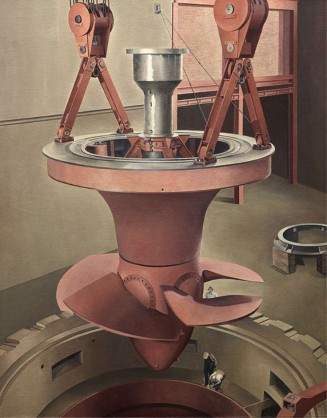
Charles Sheeler
It is worth remembering that place is not the same as space, although clearly the words are often used interchangeably. Derrida noted that place is never simply presented. It is revealed or it ‘takes place’ (revealed is more Heidegerrian). My feeling is that place only ‘occurs’ in social relationships. At least today. The making of endless strangers is also paradoxical, for the stranger next to you on the subway platform is not really a stranger. It is ‘not even’ a stranger, it is the idea of a stranger. And its not even really that, it’s the representation of an idea of a stranger. The appeal of android characters in TV and film is exactly this, for they are not really strangers, they are programs. I suspect one of the appeals of all sci-fi has some link to AI. Last season’s BBC sci fi mini series “Humans” was particularly good at capturing both the unnerving aspect of all anatoma and dolls, and also the repressed desire for intimacy with that which cannot be intimate. But such is the wish. Intimacy with an android. The implications are far reaching.

Humans, 2015. BBC.
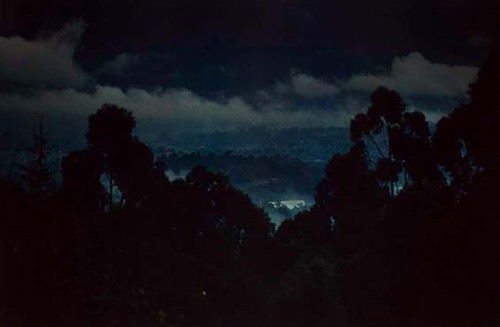
Bill Henson, photography.
One of the problematic reactions to the loss of *body* has been the presentation of reified bodies as artworks — the entire range of body art (closely associated with the dress up as someone else genre of Cindy Sherman) has been to ideologically color one’s body with various liberal messages or themes. At it’s best (and there are not many) one gets a Genesis P-Orridge, but mostly one gets the formica version of that. But I digress.
“I am parched with thirst and I perish.
But give me to drink from the ever-flowing spring on the right, by the
cypress.
“Who are you? Where are you from?”
I am the son of Earth and starry Heaven.”
Gold tablet, Crete.
Date uncertain. (Orphic Cults, Magna Grecia)

Jean Pierre Vernant
Metaphoric extension was part of social relations. The religious and mystic cults of this era were usually secret, hidden affairs, and the secrecy itself was a part of the metaphoric meaning of the ritual. This is all related to ‘place’, that place was linked to memory, to the collective, to seasonal time and that nature and character were interrelated. In Plato, there is the beginning of an analytic discussion of appearance and apparition. The image as semblance. The point for the purposes here is that, as Vernant puts it; “The eidelon manifests both a real presence and an irremediable absence at the same time. It is this inclusion of ‘being elsewhere’ in the midst of being here that constitutes the archaic eidelon, less an image in the sense we understand it today, than as a double.” Again, what isn’t there is as important as what is. Presence cannot exist without absence, without an elsewhere, and this is the real heart of theatre. Now Plato also saw mimesis in the oral tradition of memorizing stories. For the Greeks of Aristotle’s time the actor was mimetically assimilating his character on stage, but more, this process is first noted on the part of the audience.
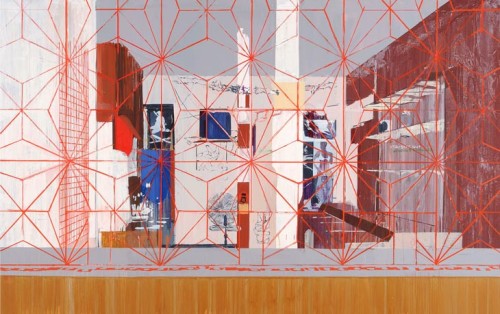
Hurvin Anderson
The image says Plato, is not reality, and then warns “one will derive reality from mimesis..imitations begun in childhood and continued in life turn into character and nature for the body, voice, and thought.” There is an aspect of Greek thinking on image that actually touches on the idea of simulacrum. It is related to the archaic period in which image and idol meant much the same thing, and as image became associated with the idea of a double — which can exist in dreams, outside reality and imitating nothing real. And throughout the archaic period and 4th century, all of this had links with funerary rituals. The doubling though, through memorization, had nothing to do with appearance. It was the space created by the residue of repetition, the spoken word, aloud, was a form of imitation, but not of appearance. Doubling, but not image, only a semblance.
In the stealth spaces of Capital, today, there are stealth people. Generalized autism said Debord, and here resides something uncanny. But it’s probably a new uncanny of some sort.
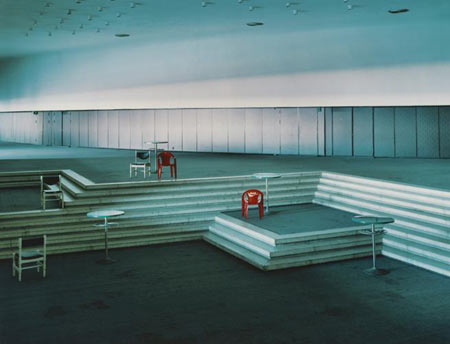
Tomoko Yoneda, photography.
A fascinating side bar here is that the god Artemis is one of those semi-monstrous deities that the Greeks situated outside, far away from *home*. She is foreign, from an alien culture, warlike and cruel. But once invited inside she becomes her opposite, the embodiment of civility and — she assimilates. As Vernant says, the *other* is only a component of the same. Artemis is the mistress of the margins, and becomes, eventually, a founder of cities. One way to see this idea in contemporary space is that without real absence, without that place from which one views an outside, and the outsider, there remains no chance for doubling, and only a kind of malignant scorn and fear. That fear that is expressed by a particular violence, the lashing out that causes sudden pain. The undoubled is only physical force personified. In terms of narrative, the oral memory became by the time of Virgil, a part of the near unconscious — Ronald R. MacDonald, in his wonderful book The Burial Place of Memory, writes…“Never have we to do with passive imitation merely, for the presence of the Homeric texts within the text of the Aeneid is part of the meaning of the poem, part of the way it achieves meaning.” When Aeneid journeys to the underworld he is met by Charon. Then soon, Sybil disdainfully comments to the ferryman…“Let the great watchdog at the door howl on/forever terrifying the bloodless shades.” Charon and Sybil are aware, to some degree, that heroism is of a new sort, that is of his time, of history, not of myth. He is the un-Homeric in a sense, but only by way of Homer. For in the underworld are only shades, shadows, projections of our own finitude. Two kinds of representation collide (says MacDonald) and Virgil is clearly on the side of future narrative progression. This is complex in a sense, but it is again relevant for the role of story and the reader or audience. The reader of Virgil intuited this, for they knew Homer by heart. And Odysseus traveled to the underworld, sword in hand. Virgil’s Aeneas raises his sword, pointlessly, before the frail bloodless dead, and then Dante and his pilgrim leaves indentations in the dust of a world of transparent and the dead who are barely there. The protagonist must go the land of the dead. The story is performed. It is performed when one reads it, in that theatre in our head. On that empty stage where we recite the familiar (usually) story. This has now wound down over six hundred years to the rapid recycling of stories, familiar, but still unknown in a sense.
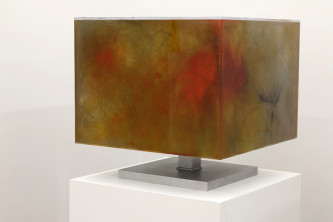
Geof Oppenheimer
And that brings one back to this idea of space as Bachelard wrote of it. A poetics of space, and then, today, the non-spaces of Auge and others. For these non spaces cannot be quite narrated, not to ourselves, for we cannot inhabit them AS ourselves. Recently someone remarked to me that they had seen a University art show…at a local state school, one that happens to be in the barrio, made up of the children of the working class. She said the work was surprisingly good, but all on small canvases because these students could not afford large ones. If you go to many University art shows, at high end prestige schools, you find BIG canvses and a thousand gallons of paint used. This anecdote is important. For the wiping out of the human takes place across all classes, but the creating of the machinery that wipes it out starts with the ruling class. The stealth people figuratively huddling in the new void of urban non-space are usually of affluent backgrounds, or educated at least. What passes for working upper middle class. The bourgeoisie. The working poor, those at temp jobs, minimum wage, or sneaking by and shopping at Costco, or Walmart, or those in prisons or the military, these people are the ones beyond the barriers usually, both literally and metaphorically.
“The high windows of traditional British school classrooms might be positioned in the optimum location for lighting (on the ‘left’ to illuminate the work of right-handed pupils—an ‘accessibility’ debate in itself), but the sills are almost always high enough to prevent pupils’ being distracted by events outside. This is a simple architecture of control.”
Dan Lockton
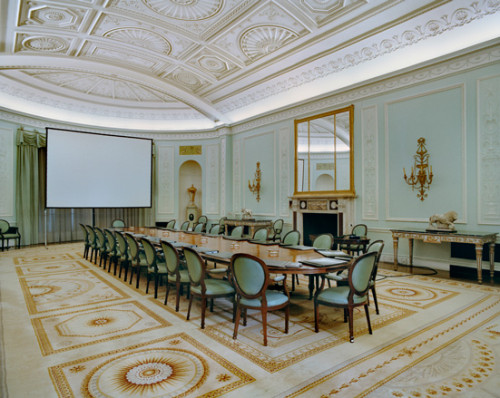
Jacqueline Hassink, photography.
The hyper modern urban center is fortified, it is disciplinary and hostile. The hostility is directed at the majority of the population, in theory to protect a very anxious and almost paranoid ownership class. But running top down comes a new sensibility of authoritarianism. This is seen primarily in men, and acutely in men under thirty five. The cultural effects, however, are complex. The student who is introduced to socialization with strangers for the first time, does so in school, usually. And school is highly structured, repressive, authoritarian, and irrational. And, lest it be forgotten, often operated by highly dysfunctional instructors. There are good teachers and it is even possible that those I describe as dysfunctional might, in other situations, be good, too. But the situation is one of hyper alienation. The student’s first experience is rote behavorial adjustment. So, culturally, the saturation of Hollywood film and TV, and the addiction to texting and social networking, has ground up the experience of narrative to the point where I suspect the very concept or idea of story may disappear. The learning of obedience to command, coupled to the constant assault of image and noise, and the distancing of a narcissistic personality disorder, for a large number — the result is non space and stealth people.

Anna Fox, photography.
But I continue to trace back some of this, because often in discussions of hyper modernity, something significant gets lost. Which is why it is important to understand conceptually how space and place change, and the ways in which narrative intersect. The non space can only be understood in some context of history. And then, one would hope, some kind of reclaiming of real space can take place, and I think that is partly the role of art. For art is narrative and memory, among other things. Hence my belief that being able to distinguish between kitsch and something more substantial becomes important.
The growth of faux news outlets like VICE suggests that in place of actual journalism (which is not to say the NY Times or Washington Post, et al, are actual anything, nor that they are anymore trustworthy, because they are not). But there is still a journalism that attempts, at least, to frame the story (the news) being reported in a context, and to verify to even some small degree the events being covered. With VICE one gets an imaginary story, usually replete with style codes of hip and youthful, and the intimacy is not between journalist and story, but between journalist and audience, but audience as captured — and reciprocally the audience’s intimacy is with adding to his or her self brand. The audience member is intimate with itself. There is a kind of self nullification going on. Plagiarism and self promotion are allowed because evidence is treated as relative, and the overriding goal is capturing the attention of the targeted audience. This is rife in such new-media sources(Gawker, Vox, BuzzFeed, Vulture, Slate, The Awl, etc) and it parallels much new architecture that is built to capture attention by positing an imagined sort of pseudo future, while simultaneously evicting history. Geof Oppenheimer said, in a lecture, something obvious but still rarely said; and that was that the way things are built and presented to us, build the rules and conversation of future civic discourse.
And this VICE sensibility, in a sense, is the quality that drove the Julie Taymor versions of Shakespeare. It was Shakespeare as video game, and then Game of Thrones imitated this fake Shakespeare, by just trotting out the signifiers for *classic* — British accents, castles, Royal houses and violence, lots of violence. Everything takes on a shiny sense of similarity. Shakespeare was similar to Shakespeare, but more fun. VICE is like real news, but more fun. Dame Hadid is like real architecture, but more fun. But this idea of fun, or entertainment is actually its opposite. Fun is a sublimated formation of lack (rivalry, castration, frustration, anxiety) — for this is true, too, of ‘beauty’ when it is merely beautiful (per Adorno). Fun and entertainment are socially acceptable neutralized transformations of the keenly felt non-space of contemporary life.
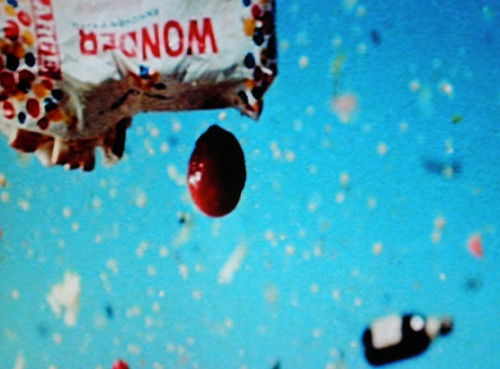
Zabriskie Point (1970), Screenshot. Michelangelo Antonioni, dr.
This is where I want to return to the loss of doubling, but also back to what I suggest is a new uncanny. This new uncanny is more obscured, in a sense, but the anxiety of marionettes, for example, lifelike but not, is transferred now to, say, androids, which paradoxically are ‘meant’ to be lifelike, but are not. And the android narrative is almost always about the actual human knowing the android is an android, a machine, but not caring, and developing feelings for it anyway. I know you are not real, but I like it that way. The anxiety that is repressed is not found, really, in the object of entertainment, but in the disfigurement of the subject viewing it. Freud saw anxiety as an affect of a universal structure. The overwhelming amount of information and media today, has the quality of domination, eliciting a feeling of unimportance — but entertainment, fun, is self justifying, and the android intimacy of non-space is then extended. It is the anti metaphoric extension in a sense.
The early perception of space and place was always connected to theological beliefs and customs. The seculariztion of space, or resecularization of space, with Newton, colonized the realm of alchemy (per Casey). The single *universe* was an expression, not just of physics, but really of Roman conquest. The empire of the cosmos. The mind of man became infinite, too. The desire of the Greeks, was to explain everything, to find the origin, but to find man’s place ‘in’ the infinite. Christianity and Roman ideas projected that search outward. The evolution of these ideas is too complex for a single posting. The birth of trade, the explorations of the 16th and 17th century that fueled the vision of Shakespeare, continued on through Melville, and Conrad, and by the time of quantum physics has caught its own tail. The realm of Kafka and Herman Broch, and Beckett. The new frontiers were invisible, abstract, theoretical, and non accessible. Time had ended, but continued on. Socially, though, place is the site of the body, of ‘human’ time, and history. The 20th century has seen the erosion of an interdependence between man and place. The idea of non space and hypermodernity, though, is both the result of Christian linearity, and Capitalist expansion and control, and the consequent intensification of class segregation and the absolute planetary virus of advertising — of solicitation, for the conquest and occupation of attention, an attention that shrinks further into its shell, a victim of massive surveillance, acute anxiety, a crippling narcissistic pathology, and a nearly insurmountable distance from Nature and other people.

It’s interesting you mention the Feudal model; it’s been a parallel that I had been entertaining for some years now. I think certainly there is an ossification in images, in the kind of dead stories that people tell each other, the “spectacle”, that resembles the kind of frozen myths and imageries of the medieval age, but as a sort of parody and banalization of such. And certainly, the way of thinking of the world as a “great chain of being” is definitely coming back. The idea of “End of History”, that everything will be Forever Like This Forever, all seem like a comeback of medievalism
Having followed this blog for a few years, I’ve come to appreciate much more the categories of time and space as the basis of understanding art and society. I think that they are the two fundamental categories of human history, really. Time and space doesn’t really exist in physics, not really. Material doesn’t really occupy any time and any space. Certainly if we were to stand in the 5th dimension, everything would collapse into an infinitely small point and there would be no time and space to speak of. Time and space is what happens when a place is inhabited, or shall we say haunted by, a human. It’s interesting that the central chapter of Debord’s “Society of the Spectacle” talks about time as the fundamental historical category. I thought he was bringing a sort of idealist metaphysics back into Marxism, but reading Marx’s Grundrisse a while back actually made me realize that this was entirely within the spirit of Marx. Because for Marx what Capitalism does to labour is to flatten it into an average “socially necessary labour time”. And labour under capitalism is all about the transformation of intangible quality into quantity, which is ultimately nothing but time. So these things sort of reconcile; what is the most mystified and mystical category is at the same time the most real, the most factual.
“The stealth people figuratively huddling in the new void of urban non-space are usually of affluent backgrounds, or educated at least. What passes for working upper middle class.”
Yes, it’s very true. There are very few true capitalists nowadays. I’d say at most 1000 people, if I were being generous, could count as capital owners in the classical sense. Everyone else is an appendage. But such is the veil of consciousness that everyone identifies with the capitalist. And one can live really affluently, certainly. But at the end of the day even the very affluent are now really part of the group who must sell their labour to survive. The only difference is that nowadays the labour sold can be pure spectacle, not even intellectual labour but pure performance. So like a gilded caged bird one can be very comfortable, and be oppressive of those lower than you on the “great chain of being” instead of seizing one’s humanity in solidarity.
By the way, “Mimesis” as such conceived by Aristotle is really a very Western construct, because the form of art it is based on, Drama, only had its central and hegemonic role in Western art. In Chinese art for example, the Lyric was the hegemonic art form, not the Dramatic. But of course there is the idea of mimicry too; one of the oldest texts on music, in the Book of Rites, talks about the way music imitates the emotions of the soul. It would be interesting to investigate how the divergent interpretation of what “mimesis” is affects both cultures. Plato’s overshadowing influence certainly matters, because he started the whole suspicion against art, really, by seeing it as something inferior, because being only an imitation of truth and thus one level removed from truth. In Chinese conception the center of art is truth, and art is considered a means to circle around and approach truth, so to speak. But at the same time art as a separate activity is not really even considered; one does art as an extension of one’s whole way of life. Every artist is expected to excel in all areas; a calligrapher is expected to be expert in painting, poetry, music, etc. and vice versa. What’s stressed is a sort of all roundedness, rather than specialization in one kind of art.
I wanted to say that I do think the vast majority of great works of art are ‘mimetic’ at their core, but it can also be a dangerous concept when it falls into the wrong hands, since for some it’s misinterpreted as code for ‘stripping artists of their poetic licence’. This is what people like J. Hoberman dabble in. Film=social realism. Film should be like a documentary, blah blah blah…Filmmakers should just look and not “express themselves”. I mention a film critic to use an example, since this attitude does seem to be most accute among cineastes, and in many respects it’s a misinterpretation of what Bazin stood for, the attitude that a film or even just a work of art shouldn’t be expressive but should just sit back, shut the f**k up and “show reality”. This is why I feel the concept of mimesis can be dangerous in the wrong hands.
True, but Mimesis is related linguistically and conceptually to things like mime and mimicry. Now when you mimic something, say you crouch down and pretend you’re an animal, or you mimic someone else’s expression (how babies first learn to communicate), you are by definition “changing” things. Mimicry is inherently embodied and thus never literal. In a sense, “all art is mimesis” is almost a tautology, because art is defined in opposition to reality. If a piece of art isn’t mimetic, then it wouldn’t be art, it’ll just be a piece of reality, part of the world.